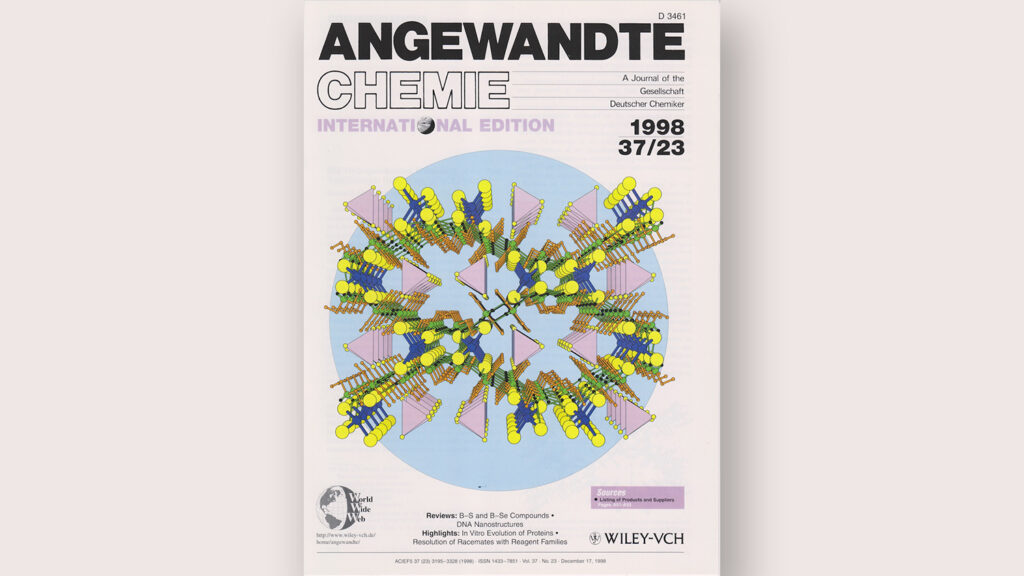#chemflashpack: A Focus on Journal Covers
As part of the #chemflashpack series, let's take a closer look at this 1998 journal cover from the work of James Martin and Brain Leafblad.

This 1998 issue of Angewandte Chemie – International Edition features a journal cover from the work of Dr. James Martin and Dr. Brain Leafblad.
Angewandte Chemie is a journal of the German Chemical Society (GDCh). With an excellent Impact Factor of 12.959 (2019), the journal is maintaining its leading position among scholarly journals with a focus on general chemistry.
In 1994, Professor James Martin joined the NC State University Chemistry Department where, for the past 27 years, his research group has been focusing on the interface of molecular and solid-state inorganic chemistry with a particular interest in condensed matter reaction mechanisms, energy science and science/education public policy.
During his time at NC State, Professor Martin has served as the chair of the NC State faculty from 2007-2009, the UNC-system faculty assembly 2007-2018, and has been a member of the Wake County Board of Education since 2011.
Professor Martin is currently an active and passionate member of the NC State and Wake County community where he advocates for comprehensive and high-quality education. He is a Cottrell Scholar of the Research Corporation.
Dr. Brian Leafblad was a member of the Martin lab when he was awarded the GAANN Electronic Materials Graduate Research Fellowship in Nanoscale Electronic and Energy Materials and his Master’s degree in inorganic chemistry from NC State. Currently, he serves as the R&D Senior Manager, Global Business Solutions at Reckitt.
The featured work entitled “The Hydrogen-Bonded Framework of the First Anti-Zeotype: [{(H2NEt2)2}2(CuCl4)][AlCl4]” reports the synthesis and structural characterization of the first hydrogen bonded metal-halide open framework material where the standard framework-counterion charge balance relationship has been reversed. This novel work allowed for ongoing research into crystal engineering by charge-balanced framework substitutions which led to the creation of a variety of materials with a vast array of potential applications.
This work was supported by the National Science Foundation, a CAREER award (DMR-9501370), and an instrumentation grant (CHE-9509532).
